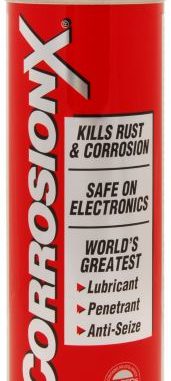
A squirt of Corrosion X could loosen things up
I’m a little hard on my tackle. I’ve been known to step on my rods and twist the eyes, and my reels? Well, let’s just say I pretty much ignore them as long as they work.
So, no, I don’t clean my reels.
In my defense, I have researched the issue, and the one thing every manufacturer absolutely advises against is the one thing almost every angler I’ve known over my career does — rinse their reels off after a trip to the coast.
That, my friends, is a good way to drive corrosive and abrasive material (think salt and grains of sand) into the working mechanism, where all kinds of bad things happen.
OK, that’s it. I can’t come up with any other reason why I don’t give my reels any TLC. Oh, yeah, I just thought of one: I’m lazy.
To be honest, I haven’t had a lot of problems with this approach. I just return from my trips, stick my rods in their proper storage and move on with life.
But every now and then a reel locks. Seizes. Refuses to work ever again.
That’s when I grind my teeth and mutter under my breath (usually when the fish are biting) while I dig around for a replacement.
Two of the old Green Monsters — the original Shimano Curados, that were seemingly indestructible — have been sitting for several years on a shelf in my garage, victims of my laissez faire attitude.
The first one went out at year eight, while the second one continued operations an extra couple of years.
Alas, they finally became testaments to my laziness.
Sure, I could have gotten them repaired, but that would entail a trip to a shop. And, remember: I’m too lazy to clean my reels, so what are the odds I’ll actually make that trip?
But I discovered a salvage plan during a conversation with Capt. Brent Roy of Venice Charters Unlimited.
“A lot of times, you can spray Corrosion X in there and let it sit, and the reel will free up,” the veteran guide told me recently.
I was heading for the door of my office, intent on grabbing the can of Corrosion X sitting in my shed, when Roy clarified.
“But not the Corrosion X in the green can,” he said. “That’s too thick. You have to use the version in the red can.”
Rats. I have, for years, used the gunk in the green can to prevent my battery connectors and other electronic connections from corroding.
Roy said the key is to spray just a little bit of the thinner red version of the stuff billed as the perfect lubricant, penetrant and anti-seize spray.
“Just spray it and turn the handle,” he explained.
Then you let it sit for a few days — in the case of my poor Curados, perhaps longer — to allow time for the Corrosion X to fully penetrate all the nooks and crannies within the reel’s mechanism.
Then, unless there is physical damage, things should loosen up.
Several days later, I heard the delivery truck pull up in front of my home office, and I ripped the box open to find my can Corrosion X.
I already had dug out the old reels, so I unscrewed the friction cast control knobs next to the star drags and removed the springs and bearings.
Then I stuck the little nozzle into each hole and squirted some Corrosion X into the reel, put the friction control assembly together, turned the handle (which grudgingly moved) a couple of cranks.
Next, I just put the reel on a table and walked away.
A couple of days later, I put the reels on rods and gave them a quick test in the backyard.
They both seem to work fine —no sticking or screaming of bearings.
So now I’m waiting for my next fishing trip to really run them through the paces.
And, if they work fine, the $20 Amazon Prime purchase will have been a lot cheaper than the repair bill.


